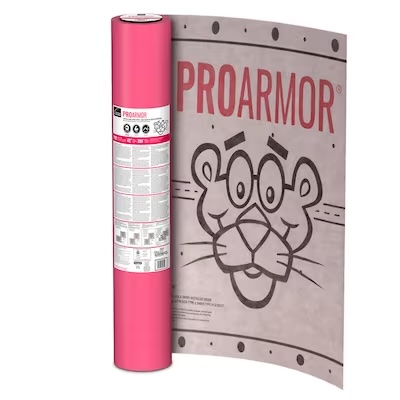Synthetic Underlayment: The New Standard for Roof Decking Protection

Synthetic Underlayment: The New Standard for Roofing Excellence in North Central Florida
As an expert roofing contractor at Brehm Roofing in Gainesville, Florida, I’ve witnessed a significant shift in the materials and methods we use in roof installation and replacement. Among these changes, the transition from traditional felt underlayment to synthetic underlayment stands out as a pivotal improvement in roofing technology.
Understanding Underlayment: Its Role and Importance
Before diving into the benefits of synthetic underlayment, it’s crucial to understand what underlayment is and why it’s a cornerstone in any roofing project. As Martin Holladay eloquently puts it in Taunton’s For Pros By Pros Book, “A milestone in any construction project is drying in, usually defined as the day the roof sheathing is covered with underlayment. Building codes require the installation of asphalt felt for several reasons. Underlayment keeps the sheathing dry until the roofing is installed, it provides some protection against leaks in case wind-driven rain gets past the roofing, and it provides a slight improvement in a roof’s fire resistance.”
This statement underscores the underlayment’s role as a protective layer between the roof sheathing and the external roofing material. It’s not just a regulatory requirement but a practical necessity for long-lasting and durable roofing.
The Shift to Synthetic Underlayment
Traditionally, roofing contractors have used asphalt felt underlayment. However, with advancements in roofing technology, synthetic underlayment is becoming increasingly popular, especially in regions like North Central Florida, where the weather can be unpredictable.
Why Synthetic Over Felt?
- Durability and Tear Resistance: Synthetic underlayment is far more durable and tear-resistant compared to traditional felt. This quality is essential for ensuring that the underlayment remains intact during the roof installation process, which can involve considerable foot traffic and equipment movement.
- Superior Weather Resistance: In North Central Florida, where wind and rain can be intense, synthetic underlayment offers superior protection. It holds up better under these conditions, ensuring that the sheathing remains dry and protected.
- Extended Exposure Time: Synthetic underlayment can be exposed for up to 6 months. This feature is particularly beneficial in Florida, where roof installations might extend beyond a day due to weather unpredictability. The ability to withstand long-term exposure ensures that the roofing project doesn’t compromise on protection even when extended over several days or weeks.
The Brehm Roofing Advantage
At Brehm Roofing, we understand the importance of using the best materials and techniques in our roofing projects. By adopting synthetic underlayment in our reroof, roof replacement, and roof installation services, we ensure that our clients receive the highest quality of work that not only meets but exceeds industry standards.
Our commitment to excellence is reflected in our choice of materials, and synthetic underlayment is a testament to this dedication. We believe in staying ahead of the curve, and by integrating innovative solutions like synthetic underlayment, we continue to lead as a premier roofing company and roofing contractor in North Central Florida.
In conclusion, the transition to synthetic underlayment in roofing is more than just a trend; it’s a strategic decision towards better, more reliable, and more durable roofing solutions. For homeowners in North Central Florida seeking the best in roof installation and replacement, Brehm Roofing’s expertise in utilizing synthetic underlayment is your assurance of quality and professionalism.

